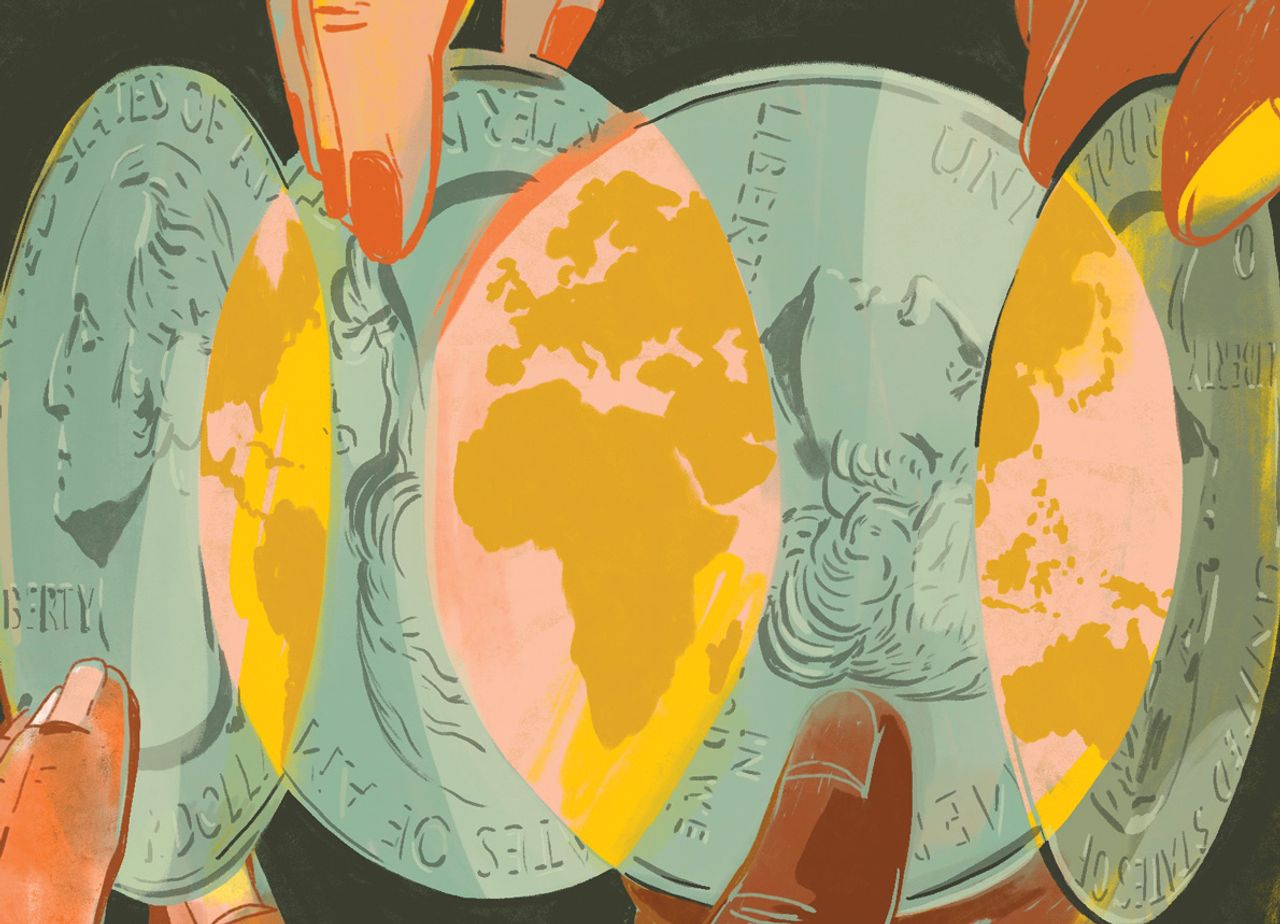The Giving-While-Living Shift
Three times the number of donors adopted giving-while-living timelines in the last decade.
A sense of urgency to solve global environmental and social issues is driving profound changes in how wealthy families are structuring their philanthropic plans. Traditional models, which aim to pay out charitable gifts for generations, are increasingly being replaced by plans that emphasise immediacy over perpetuity.
Three times the number of donors adopted giving-while-living timelines in the decade beginning in 2010, compared with the 1990s—38% of respondents versus 12%, according to a 2020 survey by Rockefeller Philanthropy Advisors in New York City. Of those, 76% chose to spend down philanthropic assets within 15 years, the survey found.
This trend is likely to continue, says Olga Tarasov, Munich-based director of knowledge development for Rockefeller Philanthropy. “There’s anecdotal evidence that the inequalities brought to the surface by the pandemic have accelerated this trend,” she says.
While the issues addressed by donors are the same regardless of time frame, environmental causes are particularly benefiting by the rising spend-down trend, Tarasov says. “When you look at reasons for giving, the environment is a higher priority for spend-down philanthropic plans.”
The giving-while-living trend is driven by a desire by donors to witness the impact of their gifts, says Dien Yuen, assistant professor of philanthropy at the American College of Financial Services. “The Gates Foundation started this and many have followed. They want to push money out the door now to see things in action.”
Tax planning is also a factor, especially during the longest bull market in history, when investors are sitting on enormous investment gains.
“There’s a big tax benefit to using securities to make gifts while alive,” says Andy Rosenberger, head of tax managed solutions at Orion Advisor Solutions in Omaha, Neb. “You don’t have to realize gains when you give them away and you create a charitable deduction that can offset income elsewhere.” When bequeathed at death, a charitable deduction isn’t permitted.
For folks who have a multigenerational charitable foundation but want to shift to a spend-down strategy within a shorter time frame, legal issues may have to be addressed.
“Charters of a foundation or family office often stipulate a timeline, and the default setting is in perpetuity,” says Tarasov. “But changing is difficult if a family is divided.”
Embracing Lifetime Giving
Most wealthy families aren’t committing to sunsetting all philanthropic assets by the end of their life expectancies, but are doing some of both—giving now and setting up foundations for giving over generations—says Caroline Hodkinson, head of philanthropic advisory at Bessemer Trust in New York. “There’s a spectrum, and most of our clients are in the middle.”
There is a notable difference in how clients approach giving during life versus at death, most notably, a stronger desire for both control over how gifted assets will be used and evidence of impact, says Crystal Thompkins, head of philanthropic solutions at BNY Mellon Wealth Management. “The lifetime mission involves a more dynamic conversation. Clients want to see diversity in leadership. Track records on success,” she says.
The Lifetime Giving Tool Kit
Lifetime donors must carefully weigh various charitable tools, Thompkins says. “It used to be that the uberwealthy focused on private foundations and donor-advised funds were considered only good for chequebook philanthropy,” she says. “But that’s shifting, because you can use donor-advised funds in really creative ways to meet lifetime planning goals.”
Charitable lead trusts are attractive when interest rates are low. Donors get a larger income tax deduction for the amount transferred to the trust when rates are low, Thompkins says.
The trust pays annual income to charity, and at the end of its term, remaining assets go to beneficiaries. They require in-depth planning because they have tax, estate-planning, and legal implications, Thompkins says. “That trust conversation has been deprioritized at a time where there is a sense of urgency around meeting need.”
 Copyright 2020, Dow Jones & Company, Inc. All Rights Reserved Worldwide. LEARN MORE
Copyright 2020, Dow Jones & Company, Inc. All Rights Reserved Worldwide. LEARN MORE
This stylish family home combines a classic palette and finishes with a flexible floorplan
Just 55 minutes from Sydney, make this your creative getaway located in the majestic Hawkesbury region.
As Paris makes its final preparations for the Olympic games, its residents are busy with their own—packing their suitcases, confirming their reservations, and getting out of town.
Worried about the hordes of crowds and overall chaos the Olympics could bring, Parisians are fleeing the city in droves and inundating resort cities around the country. Hotels and holiday rentals in some of France’s most popular vacation destinations—from the French Riviera in the south to the beaches of Normandy in the north—say they are expecting massive crowds this year in advance of the Olympics. The games will run from July 26-Aug. 1.
“It’s already a major holiday season for us, and beyond that, we have the Olympics,” says Stéphane Personeni, general manager of the Lily of the Valley hotel in Saint Tropez. “People began booking early this year.”
Personeni’s hotel typically has no issues filling its rooms each summer—by May of each year, the luxury hotel typically finds itself completely booked out for the months of July and August. But this year, the 53-room hotel began filling up for summer reservations in February.
“We told our regular guests that everything—hotels, apartments, villas—are going to be hard to find this summer,” Personeni says. His neighbours around Saint Tropez say they’re similarly booked up.
As of March, the online marketplace Gens de Confiance (“Trusted People”), saw a 50% increase in reservations from Parisians seeking vacation rentals outside the capital during the Olympics.
Already, August is a popular vacation time for the French. With a minimum of five weeks of vacation mandated by law, many decide to take the entire month off, renting out villas in beachside destinations for longer periods.
But beyond the typical August travel, the Olympics are having a real impact, says Bertille Marchal, a spokesperson for Gens de Confiance.
“We’ve seen nearly three times more reservations for the dates of the Olympics than the following two weeks,” Marchal says. “The increase is definitely linked to the Olympic Games.”

Getty Images
According to the site, the most sought-out vacation destinations are Morbihan and Loire-Atlantique, a seaside region in the northwest; le Var, a coastal area within the southeast of France along the Côte d’Azur; and the island of Corsica in the Mediterranean.
Meanwhile, the Olympics haven’t necessarily been a boon to foreign tourism in the country. Many tourists who might have otherwise come to France are avoiding it this year in favour of other European capitals. In Paris, demand for stays at high-end hotels has collapsed, with bookings down 50% in July compared to last year, according to UMIH Prestige, which represents hotels charging at least €800 ($865) a night for rooms.
Earlier this year, high-end restaurants and concierges said the Olympics might even be an opportunity to score a hard-get-seat at the city’s fine dining.
In the Occitanie region in southwest France, the overall number of reservations this summer hasn’t changed much from last year, says Vincent Gare, president of the regional tourism committee there.
“But looking further at the numbers, we do see an increase in the clientele coming from the Paris region,” Gare told Le Figaro, noting that the increase in reservations has fallen directly on the dates of the Olympic games.
Michel Barré, a retiree living in Paris’s Le Marais neighbourhood, is one of those opting for the beach rather than the opening ceremony. In January, he booked a stay in Normandy for two weeks.
“Even though it’s a major European capital, Paris is still a small city—it’s a massive effort to host all of these events,” Barré says. “The Olympics are going to be a mess.”
More than anything, he just wants some calm after an event-filled summer in Paris, which just before the Olympics experienced the drama of a snap election called by Macron.
“It’s been a hectic summer here,” he says.

AFP via Getty Images
Parisians—Barré included—feel that the city, by over-catering to its tourists, is driving out many residents.
Parts of the Seine—usually one of the most popular summertime hangout spots —have been closed off for weeks as the city installs bleachers and Olympics signage. In certain neighbourhoods, residents will need to scan a QR code with police to access their own apartments. And from the Olympics to Sept. 8, Paris is nearly doubling the price of transit tickets from €2.15 to €4 per ride.
The city’s clear willingness to capitalise on its tourists has motivated some residents to do the same. In March, the number of active Airbnb listings in Paris reached an all-time high as hosts rushed to list their apartments. Listings grew 40% from the same time last year, according to the company.
With their regular clients taking off, Parisian restaurants and merchants are complaining that business is down.
“Are there any Parisians left in Paris?” Alaine Fontaine, president of the restaurant industry association, told the radio station Franceinfo on Sunday. “For the last three weeks, there haven’t been any here.”
Still, for all the talk of those leaving, there are plenty who have decided to stick around.
Jay Swanson, an American expat and YouTuber, can’t imagine leaving during the Olympics—he secured his tickets to see ping pong and volleyball last year. He’s also less concerned about the crowds and road closures than others, having just put together a series of videos explaining how to navigate Paris during the games.
“It’s been 100 years since the Games came to Paris; when else will we get a chance to host the world like this?” Swanson says. “So many Parisians are leaving and tourism is down, so not only will it be quiet but the only people left will be here for a party.”
This stylish family home combines a classic palette and finishes with a flexible floorplan
Just 55 minutes from Sydney, make this your creative getaway located in the majestic Hawkesbury region.





















